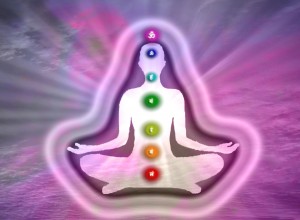Prana is the Sanskrit word for “life”. A simple and anatomically connected meaning of Prana is derived from its 2 prefixes, “pra” = “prime’ and “A” = “all round”; and the root, “an” “to move”. Thus, this word indicates “the primary and all round motion of Life Energy”. This life Energy “Prana” has been vividly invoked and described in Vedas.
In Yoga, there are three main channels of praṇā vāyu. They are Ida, Pingala and Sushumna. Ida relates to the right side of the brain, and the left side of the body, terminating at the left nostril and pingala to the left side of the brain and the right side of the body, terminating at the right nostril. In some practices, alternate nostril breathing balances the praṇā vāyu that flows within the body. In most ancient texts, the total number of nadis in the human body is stated to be 72,000. When praṇā vāyu enters a period of uplifted, intensified activity, the Yogic tradition refers to it as Pranotthana.
Prana is the universal cosmic energy – which has not only given rise to the entire external world but has also created our gross body.
Prana has many levels of meaning – from the breath we take every moment to the energy of pure consciousness itself. Prana is not only the basic life force but it is the primordial energy, working on the level of body and mind. Indeed, the entire universe is a manifestation of Prana, which is the original creative power. Even Kundalini Shakti, the inner power that transforms consciousness, develops from the awakened Prana.
On the cosmic level, there are two basic aspects of Prana. The first is the un-manifest aspect of Prana, which is the energy of pure consciousness that transcends all creation. The other is the manifest Prana which is the force of creation itself.
Prana arises from the attribute (guna) of rajas, the active force of Nature (Prakriti). Nature consists of three gunas: sattva or purity which gives rise to the mind; rajas or movement which gives rise to the Prana; and tamas or inertia that gives rise to the body.
Relative to our physical existence, Prana is a modification of the air element, primarily the oxygen we breathe that allows us to live. Yet, as air originates in ether or space, Prana arises in space and remains closely connected to it. Wherever we create space, the energy or Prana arise automatically.
Prana is one but acts in different ways. Lower pranas control the senses and are under the control of main prana controlled by the Paramatma according to desire and karma of the jiva. Vedanta-sutra, Bhagavata Purana 4.25-28 (serpent analogy), Prasna Upanisad and other scriptures contain elaborate descriptions of prana. The sun is the reservoir of the cosmic light or Prana. He rises helping the microcosmic Prana to see objects. The goddess who presides over the Earth (Bhumi) is the cosmic Apana and she helps man by attracting the downwards the apana of the person. The space which is between the Earth and the Sun (antariksa) is the cosmic Samana, (and it helps the Samana inside man). The atmosphere or Vayu is cosmic Vyana (and helps the Vyana inside man). Various Eastern healing methods and martial arts work with prana.


